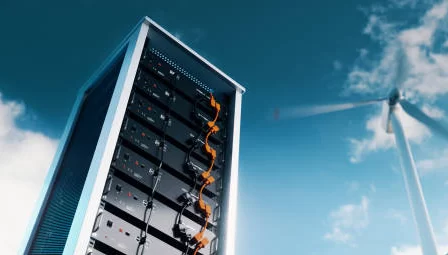Smart Grid and Microgrid: Leading the Energy Future
In today’s rapidly developing world, energy issues have always been the focus of people’s attention. With the continuous progress of technology, smart grids and microgrids are gradually becoming the key solutions to address energy challenges.
The smart grid is like a highly intelligent energy steward. It uses advanced information technology and communication technology to closely connect all aspects of power production, transmission, distribution, and consumption. Through real-time monitoring and data analysis, the smart grid can optimize power distribution, improve energy utilization efficiency, and reduce energy waste. For example, the smart grid can automatically adjust power supply according to the electricity demand of different regions to ensure a stable power supply. At the same time, the smart grid can also be combined with renewable energy sources such as solar energy and wind energy to achieve efficient utilization of clean energy.
The microgrid is like a small independent energy system. It can independently provide power supply to a specific area when the main grid fails, improving the reliability of power supply. Microgrids usually consist of distributed power sources, energy storage devices, energy conversion devices, and loads. Distributed power sources can be solar panels, wind turbines, etc., and energy storage devices can store energy when there is sufficient power and release it when needed. In this way, microgrids can not only be self-sufficient but also interact with the main grid and output or input power according to the needs of the main grid.
The combination of smart grids and microgrids brings us many benefits. First, they improve the reliability and stability of energy. In the event of natural disasters or other emergencies, microgrids can operate independently to ensure the power supply of key facilities. At the same time, smart grids can quickly detect and repair faults and reduce power outages. Secondly, they promote the development of renewable energy. Smart grids can better integrate renewable energy sources, and microgrids can provide access points for distributed renewable energy sources and improve the utilization rate of renewable energy. In addition, smart grids and microgrids can also achieve efficient energy management and reduce energy costs. Through smart metering and demand response technologies, users can better understand their electricity consumption and reasonably adjust their electricity consumption behavior to reduce electricity bills.
However, to achieve the widespread application of smartgrids and microgrids, there are still some challenges. The first is technical issues. Smartgrids and microgrids require the support of advanced communication technology, control technology, and energy storage technology. At present, these technologies are still in the process of continuous development and improvement, and their reliability and stability need to be further improved. The second is the cost issue. Building smart grids and microgrids requires a large amount of capital investment, including equipment procurement, installation, and maintenance costs. This may be a huge burden for some regions. In addition, policy and regulatory support is also crucial. The government needs to formulate relevant policies and regulations to encourage and guide the development of smart grids and microgrids and provide a good development environment for them.
To overcome these challenges, we need to take a series of measures. First, increase investment in research and development of smart grid and microgrid technologies to improve technical levels. Encourage enterprises and scientific research institutions to strengthen cooperation and jointly overcome technical difficulties. Secondly, explore diversified financing channels to reduce construction costs. Construction funds can be raised through government subsidies, enterprise investment, and social capital participation. In addition, strengthen international cooperation, learn and draw on advanced foreign experience and technologies, and promote the development of smart grids and microgrids in China.

